Take a Holiday in Spain
Pick up any climbing magazine, and chances are you’ll find an article or two about exotic crags in other countries, complete with pictures of flowing tufas, orange and blue cliffs, the stuff that dreams are made of. As tempting as those gorgeous photos are, I’ve never really had grand ambitions to climb internationally. For me, one of the best things about being a climber in the US is that there are so many unique places to go that don’t require an epic plane flight or trying to figure out a language you don’t speak (or keeping your passport current). And while I’ve been to many of the major crags in this country, there are still many more I’m excited to visit.
And while I get several generous two-week breaks throughout the year, another excuse for not going abroad was that fourteen days seemed like too short of a window for a trip where you have big travel days, adjusting to a different time zone, figuring out the logistics of a new climbing area in a foreign country, etc., etc. That being said, there are a few places that have always piqued my interest, with Spain, Kalymnos and Australia being at the top of a short list of venues I would visit should the opportunity arrive.
Towards the end of January, we started looking at places to go for our most recent spring break, and on a whim we toyed with the idea of something different (gasp!) than our usual Vegas vacation. We started plugging in flights from Denver to see what kind of cost we were looking at. Monterrey, $550. I’d never been to the Potrero, and Tracy hadn’t been for a long time. Cuba, $260. Wow, really? I don’t know enough about the climbing, isn’t it still illegal? Madrid, Barcelona, $1300. Damn that’s expensive for two weeks. Paris, $440. Huh, it also looks like it’s pretty cheap to fly from Paris to Barcelona… We didn’t hesitate, and bought the tickets right away. Our spring break trip to Spain began to take shape.
When we first started contemplating where in Spain to go, the amount of climbing was overwhelming. We considered Margalef, Siurana and Chulilla as our top choices, and after talking to some friends who had been to all those places, we settled on Siurana. It was relatively close to Barcelona, there was a cool little town (Cornudella de Montsant) to stay in only minutes from the climbing, and there were many other climbing areas close by. We got cheap flights from Paris to Barcelona, found some accommodations, and we were set. Spring break in Spain! Oh right, and I had to expedite my passport renewal because it was expired.
After a briefly stressful twenty minutes at the Barcelona airport when we thought my bag with one of our ropes and half the draws had been lost, we hit the road with high levels of stoke. Blasting some Euro pop, zipping down the highway in our small Audi A1 (like a Mini Cooper), we were in Spain and it was on! For the first hour after leaving Barcelona you are on interstate highways, but then you get to Tarragona and begin to head into the mountains. The roads quickly get more narrow and windy, and even though it was dark we could tell we were getting closer to something magical. Trying to find our flat late at night, among the small, narrow streets was a bit of a challenge but we eventually sent and got settled in.
Waking up in the morning, we found ourselves in a quaint old town, with stone buildings hundreds of years old, narrow streets, classic Euro-stuff here. The Serra de Montsant towered in the distance, with miles of impressive cliffline standing sentinel over the valley. A quick stop for some coffee and baguettes, and we were off to see what this place was all about. The narrow, winding road to Siurana first took us past the Valley crags, bright orange and grey in the morning sun. Once the road leveled out on the top of the mesa, we made our way to the small parking lot adjacent to the ancient clifftop village. There were climbs 30 seconds from the car, though the first 15 or so were very short, bolted boulder problems. I instantly felt a connection with my Spanish counterparts, as I was reassured that it wasn’t just in Colorado that every square inch of climbable rock will get bolted.
Going into the trip I was a little anxious about the climbing, as I’d read it was similar in style to Smith Rock, with vertical to slightly overhanging climbing on small holds and generous spacing between the bolts. I have only climbed at Smith a handful of times, but if there’s a place that defines my anti-style, Smith is it. (Tracy likes to tell a story about me almost retiring from climbing after our first trip there, I don’t know what she’s talking about). While there are some similarities, I personally thought Siurana had more in common with Sinks Canyon outside Lander, if you made those cliffs orange and grey instead of bone white. For while there was no lack of crimps, the thing that really defined the area in my mind was the pockets. So many pockets, of all shapes and sizes. The rock for the most part was bullet, though here and there you can find some fun choss to wrangle if you are missing your fix from the western US.
We settled easily into a routine of two days on, one day off, which maximized climbing for our short stay. The rock was very sharp, so rest days were crucial not only for our fingers but for our skin as well. A quick stop at the cafe in the center of town each day, some Cafe Americano, grabbing a baked item or two, and off we went back up the windy road. Using a combination of the Rockfax guidebook app and the Siurana book by local developer Toni Arbones, it was easy to get around and find the classics. With around 1500 routes, it was a little daunting to pick where to climb, but we started out easy and worked our way up as we got used to the style. Onsighting was the name of the game, there wasn’t time for projecting when so many lines awaited. I think I ended up climbing about 57 pitches in six climbing days, Tracy beat me by a couple, but to be fair I got sick for a bit and that dampened my enthusiasm. Generally the grades felt stout compared to local standards, and several other Coloradans we ran into there felt the same way.
While there were certainly other climbers, crowds were never really a concern, even on the weekend. Maybe we were at all the right spots, but rarely did we have to wait for a climb, and everyone was friendly about sharing draws, swapping ropes, etc. The local culture was warm and welcoming, even when we struggled to recall our high school spanish. The international scene was a lot of fun, every day we’d meet climbers from all over the world. Most seemed to be on extended (six months to a year) climbing trips, and you could tell they were a little confused (amused?) at our short ten day trip. Hearing so many different languages at the cliff each day added a fun cultural component that you don’t get at most venues in the US.
The landscape was gorgeous. At the Village cliffs, you look out on a vast limestone gorge, with the Arboli crags on the opposite side and so much sick limestone in view it makes you a little envious of how much good rock these folks have. The Valley crags provide a more open and expansive few to the south, with the mountains fading from green to shades of blue in the distance, and the Serra de Montsant watching over it all. We saw many beautiful sunsets, marveling each evening as the already surreal landscape was bathed in various shades of pinks and reds.
At the Village crags, many routes had a more old-school, runout-feeling to them. Once we got the guidebook it was easy to see when a climb was put up, and we started avoiding anything pre-2000 if it was close to our limit. Unlike at some places in the States, older routes that had been reequipped with glue-ins had not also had their runouts eliminated, but preserved in all their nerve-wracking glory. The Valley crags felt overall more modern, though it wasn’t uncommon to encounter a longer stretch between bolts to keep you honest.
Like a toddler slowly learning to walk, every day was a lesson in understanding how to piece together the crimps, pockets and footwork that led skyward up these immaculate Spanish cliffs. As expected, by our last day, I felt I was finally starting to understand the style and was ready to try some harder routes, but we had a plane to catch. This is the downside of a quick trip, but also left me with a desire to return, hopefully for a longer stay in the future to have more time to fully explore these wondrous orange and grey crags.
Looking back on it all, I’ve changed my mind about international climbing, even though I still think the US is stacked and obviously easier to travel within. Logistically, this trip was very easy to pull off in a short period of time, and if you can score cheap tickets, then there’s no reason not to go! And even though the style of climbing in Siurana was hard for me, and I personally felt beat down by the climbing, I would go back in a heartbeat. The people, the place, the climbing, it all combined to offer one of the best climbing experiences I’ve had and I highly recommend taking a holiday in Spain.
Stay tuned for part 2, for detailed logistics of planning a trip to Siurana.
One Response to Take a Holiday in Spain
Bulldog Creek Dog Walk (IV WI 4+)
Hayden Carpenter and Tom Bohanon recently repeated an obscure ice climb on the south side of Mt Sopris. Given a brief mention in Jack Robert’s ice guide, Bulldog Creek Walk is described as being 100 meters of WI 4. What they found was seven pitches of ice in a remote setting that makes for one […]
Connect with Us





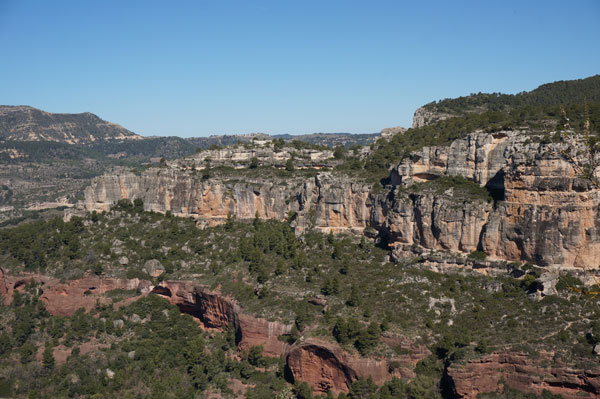
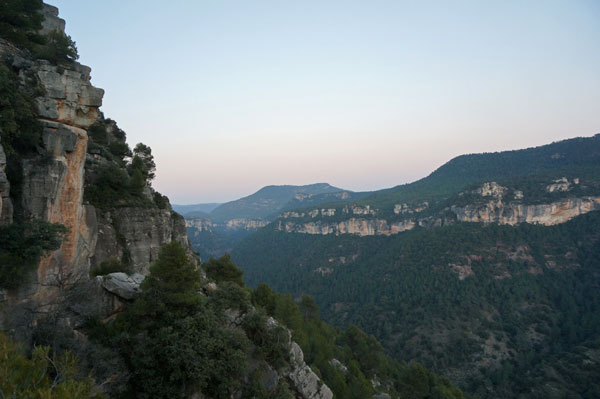
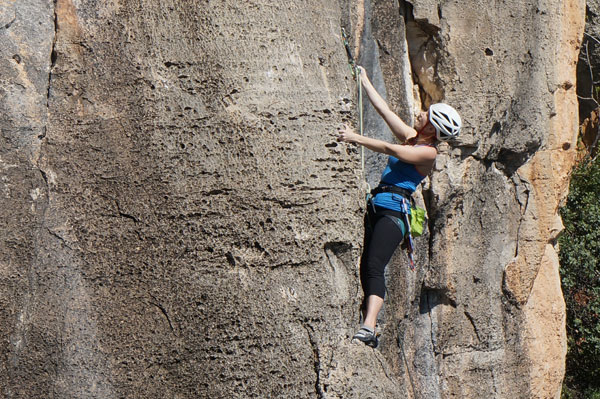
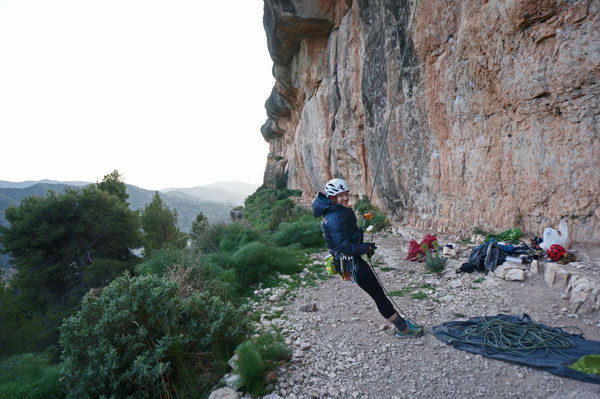
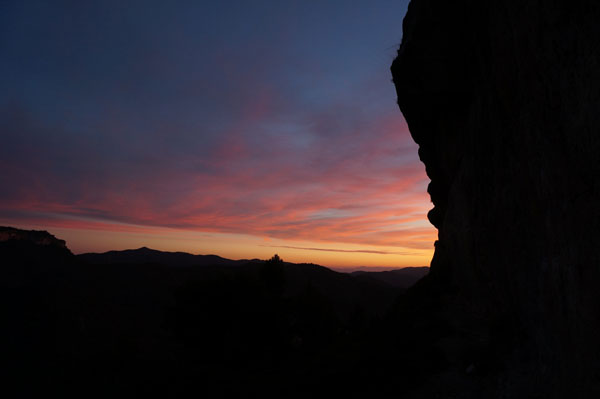
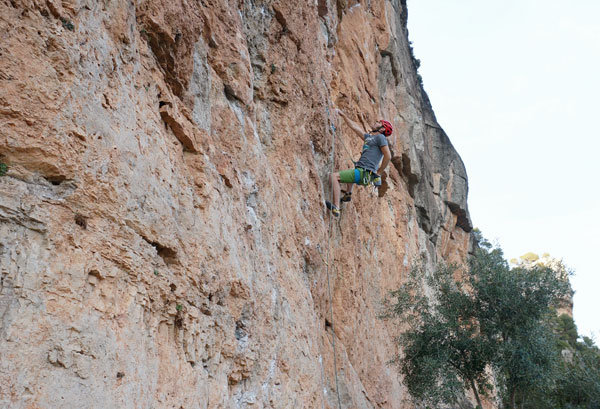
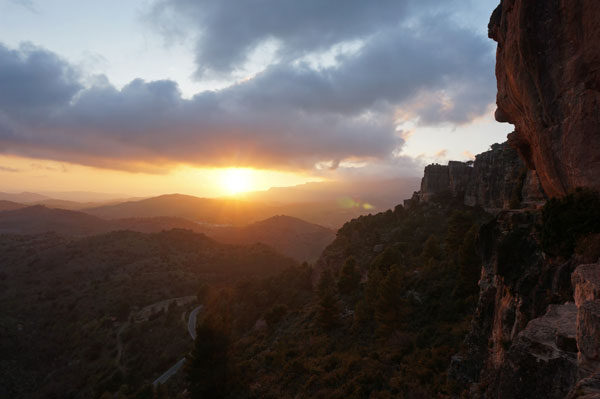










Nice one BJ!
You are brave to go to an area with your “anti-style”, but I suspect Tracy may have done better on those dinky holds! One your next trip to a foreign country, consider Idaho!